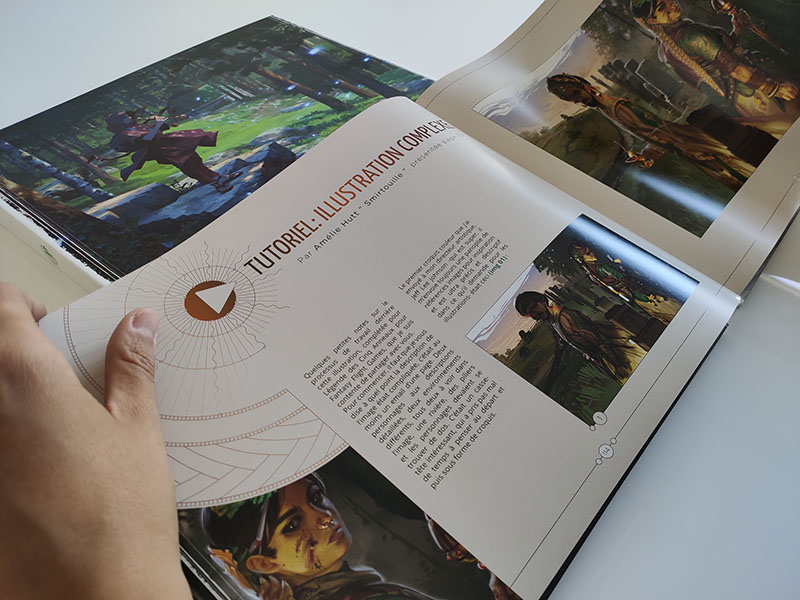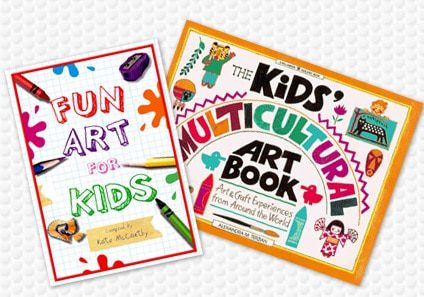Must-Have Prepress Tips for Flawless art book Printing
Must-Have Prepress Tips for Flawless art book Printing
Blog Article
Discover the Vital Guide to Art Book Printing for Aspiring Artists and Publishers
As an aspiring artist or publisher, comprehending the nuances of art book printing is essential to bringing your vision to life. What are the essential aspects you should concentrate on to develop a stunning art book that absolutely represents your work?
Comprehending Different Kinds of Art Books
When you dive right into the world of art books, you'll swiftly uncover that they can be found in numerous forms, each tailored to different artistic expressions and audiences. Coffee table books typically showcase magnificent visuals, excellent for informal surfing, while essays dive deep right into an individual artist's work, offering context and insights. If you have an interest in particular art movements, exhibit brochures provide detailed paperwork of shows, including essays and critiques.
For instructional functions, art manuals and strategy books guide you via various mediums and designs, making them vital for striving musicians. Limited edition or musician publications blur the lines in between art and literary works, typically integrating one-of-a-kind style aspects or handcrafted features. Understanding these kinds helps you establish what resonates with you and what could ideal match your target market. Each format serves its function, and understanding their distinctions can improve your art book trip.
Choosing the Right Paper and Products
Choosing the right paper and products can greatly affect the general top quality and feeling of your art book. Beginning by considering the sort of artwork you have. For vivid colors and elaborate information, choose a shiny surface or a heavyweight matte paper that enhances visual depth. If your work includes softer tones or structures, an all-natural or uncoated paper can offer a warm, inviting touch.
Think of the weight of the paper, as well. Thicker alternatives frequently provide an even more expert look, while lighter papers can reduce printing expenses. Don't forget the binding materials; a strong cover can shield your web pages and contribute to guide's visual.
Ultimately, take into consideration sustainability. Eco-friendly options are obtaining appeal and can reflect your values as an artist. By thoroughly choosing your paper and materials, you'll assure that your art book not only looks wonderful but also feels special in the hands of your visitors.

Picking the very best Printing Methods
When it comes to printing your art book, selecting between balanced out and digital printing can considerably affect your last item. You'll also want to take into consideration how paper high quality impacts the overall look and feel of your art work. Let's check out these key printing methods to discover the best fit for your project.
Balanced Out vs. Digital Printing
While both countered and digital printing have their advantages, picking the appropriate method for your art book can considerably affect the final item. Balanced out printing provides high-quality pictures and vibrant colors, making it excellent for larger print runs. If you're aiming to create hundreds or thousands of duplicates, balance out will provide you constant results and lower per-unit prices. On the various other hand, electronic printing excels for smaller sized quantities and quicker turn-around times. It enables very easy customization, allowing you to print distinct copies without added configuration prices. Consider your spending plan, timeline, and the quantity of your job. Eventually, your option needs to line up with your creative vision and distribution strategy, guaranteeing that your art book reflects the quality you want.
Paper High Quality Factors To Consider
Picking the appropriate paper top quality can substantially boost the visual charm and tactile experience of your art book. Start by considering the weight and texture of the paper. Larger paper usually really feels even more lavish and can much better display dynamic colors and elaborate information. For prints, a glossy finish can make photos pop, while a matte coating supplies a softer, more refined appearance. Don't forget about the paper's illumination; brighter sheets can improve color accuracy and comparison.
Next, consider the sustainability of your selection. Environmentally friendly alternatives are becoming significantly prominent and can appeal to environmentally-conscious readers. Lastly, request examples to see just how various papers collaborate with your artwork, making certain the final item shows your vision completely.
Making Certain Shade Precision in Your Prints
To accomplish stunning prints, you require to concentrate on color precision from the beginning. You'll wish to utilize color calibration strategies to confirm your screen and printer are in sync. In addition, proofing your job prior to the last print run can help catch any type of disparities, guaranteeing your art looks simply as you pictured.
Shade Calibration Strategies
Ensuring color accuracy in your prints starts with reliable color calibration Click This Link techniques that assist keep uniformity in between your electronic photos and last published products. Next, pick a color account matched for your printing procedure, like CMYK for print materials. By constantly using these methods, you'll enhance the overall quality of your art prints and far better communicate your artistic vision.
Proofing for Precision
While you might believe your digital photos are prepared for print, proofing is necessary for accomplishing color precision. Prior to dedicating to a full print run, constantly request an evidence from your printer. This enables you to see exactly how shades equate from screen to paper. Contrast the proof with your adjusted screen to find any kind of disparities. Pay interest to saturation, click here to read illumination, and color, as these factors can drastically impact your last product.
If adjustments are required, communicate clearly with your printer regarding your wanted outcomes. Do not hesitate to request numerous proofs if required; it's worth the investment to get it right. Eventually, comprehensive proofing assurances that your artwork is stood for as you envisioned it, keeping your artistic honesty throughout the printing procedure.

Creating Layouts That Enhance Your Artwork
When you make layouts for your art book, it's necessary to contemplate exactly how each element engages with your art work. Go for an equilibrium between visuals and message, making certain neither eclipses the other. Use white space purposefully; it offers your artwork room to breathe and accentuates its details.
Consider the flow of your book. Set up pictures in a manner that overviews the visitor's eye, developing a narrative or thematic development. art book. Vary the dimensions and positionings of your art work to keep the design vibrant and intriguing
Select font styles that complement your artwork without sidetracking from it. Maintain text succinct and relevant, providing context or insight that enhances the viewer's experience.
Finally, test different designs. Print samples to see exactly how the styles translate theoretically, and readjust as required. By thoughtfully designing your layouts, you'll create a visually appealing art book that reverberates with your target market.
Binding Options for a Specialist Finish
Picking the right binding alternative can greatly influence the general discussion of your art book. You'll want to think about both aesthetics and toughness when making your choice. Popular choices consist of excellent binding, which uses a sleek look and is perfect for thicker books; saddle stitching, perfect for smaller brochures; and spiral binding, which allows web pages to lay level for article source very easy viewing.
If you're going for a premium feeling, case binding is a superb option, providing a strong cover and a professional look (art book). Do not forget concerning the cover product; alternatives like fabric, natural leather, or a glossy surface can boost your book's charm
Whatever choice you pick, ensure it matches your art work and boosts the reader's experience. Take your time to consider the advantages and disadvantages of each method, so your end product shows the high quality of your imaginative vision.
Preparing Your Data for Publish Readiness
To ensure your art book is print-ready, you'll require to pay close focus to file prep work. Beginning by establishing your record dimension to match your wanted print measurements.
Also, embed your font styles or convert text to describes to prevent any type of font concerns. Conserve your job in a PDF style, as this is the most accepted file type for printers. Double-check your declare any typos or layout errors, as adjustments can be pricey after the reality. Lastly, think about creating a proof to review prior to the last print run. Complying with these steps will certainly help you achieve a sleek, specialist art book.
Frequently Asked Inquiries
What Is the Typical Cost of Publishing an Art Book?
The average cost of printing an art book varies, yet you can expect to pay anywhere from $5 to $20 per duplicate, relying on elements like dimension, paper high quality, and printing volume.
Just How Can I Discover a Reliable Printing Company?
To locate a dependable printing firm, begin by investigating online evaluations and asking fellow artists for referrals. Compare quotes, examine profiles, and communicate your demands clearly to assure they understand your vision and high quality expectations.
What Is the Common Turn-around Time for Printing?
The typical turnaround time for printing varies yet typically varies from one to 4 weeks. Aspects like job intricacy and quantity can influence this. Constantly validate with your selected printer for certain timelines and expectations.
Can I Publish My Art Book in Limited Quantities?
Yes, you can absolutely print your art book in minimal amounts. Many printing business provide short-run alternatives, permitting you to generate simply the number you need, making it easier to handle expenses and inventory.
What Legal Considerations Should I Know for My Art Book?
You need to consider copyright, licensing contracts, and model releases when creating your art book. Make particular you deserve to use all pictures and message, securing yourself from potential lawful problems later on.
Report this page